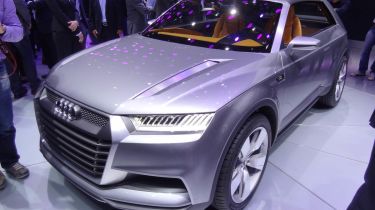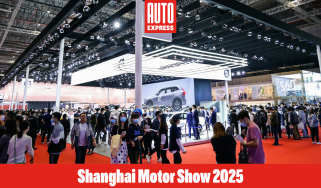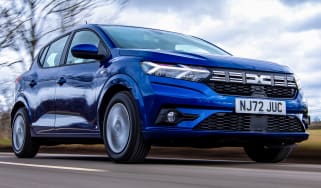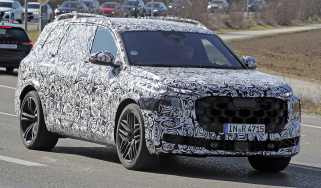Audi Crosslane Coupe concept revealed
Three-door Audi 'Q2' gets advanced chassis and plug-in hybrid power
Audi has thrown the covers off a surprise concept at the Paris show. Officially called the Crosslane Coupe, it's smaller than the Q3 crossover, so is likely to be badged Q2 if and when it makes production.
That seems likely though, as Steve Lewis, Audi head of concept design, told us: "This is far more realistic than something like the quattro concept. Audi's direction is heading towards a smaller SUV and this concept will definitely influence the production version."
Following the example of the Range Rover Evoque Coupe, the Crosslane uses a sporty three-door layout with two small seats in the back, although there's a removable carbon-fibre targa-style roof panel. Whether a three or five-door model will make production is still being debated, according to Lewis: "Both lanes are being investigated. We're trying to convince the board that this will appeal to younger customers, especially with the targa roof. The Range Rover Evoque was always in our sights when designing this car."
It measures in at 4,250mm long, 1,900mm wide and 1,500mm high, while the wheelbase is 2,550mm. That makes it slightly larger in every dimension than a three-door A3 hatchback. However, it’s 135mm shorter and 108mm lower than the Q3, confirmation that this previews a new small member of Audi’s Q family of SUVs.
The desing is typical Audi minimalist chic, but it is said to preview the next generation of Q cars. "We've had complaints that all Audis look the same, but with this we are showing a new 3D grille and headlights that will set our SUVs apart," Lewis explained.
It also features breakthrough Ultra chassis technology, with a spaceframe that combines carbon-fibre and aluminium to reduce weight and improve stiffness. Elements of the chassis can be seen through the bodywork to stunning effect, and we're told that the designers actually sketched how the chassis should look before handing it over to the engineers. "This chassis could definitely make production, although it would uses less carbon-fibre – only where it was needed for strengthening," Uwe Haller, the concept's chief engineer, told us.
Power comes from a 116bhp electric motor with 250Nm of torque and a 130bhp 1.5-litre three-cylinder engine. It's the same powertrain as the A1 e-tron we drove last week, with an electric-only range of 50 miles before the engine kicks in, so the technology is certainly feasible.
Find a car with the experts







